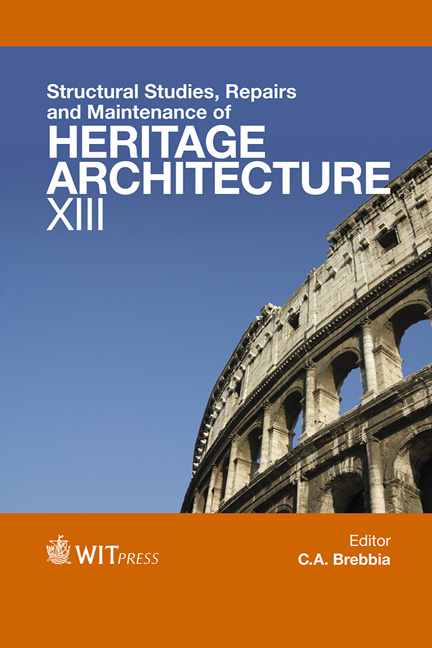Recovery Intervention Of Two Theatres In Basilicata (Italy): History And Techniques
Price
Free (open access)
Transaction
Volume
131
Pages
11
Page Range
279 - 289
Published
2013
Size
583 kb
Paper DOI
10.2495/STR130241
Copyright
WIT Press
Author(s)
A. Guida, I. Mecca & A. Pagliuca
Abstract
The need, more and more frequently, for making recovery interventions as well as the technological, structural and functional adaptation of built heritage often collides with the lack of knowledge of its historical, cultural and architectural values. This work is developed on a revaluation assumption of two theatres in Basilicata (Italy), located respectively in the old town centers of Matera and Potenza. Built in the first half of XX century, they represent the first evidence of \“Modern Architecture” (realized using concrete), in which the testing of techniques and materials will contribute to define the unique forms and solutions of the building; in fact, they represent the first examples of a new construction technique that, at the time, began to be introduced also in Basilicata. Furthermore, they represent emblematic examples of architecture for the spectacle on which to perform hypothesis of recovery interventions, both for their localization and architectural and/or structural conformation and for materials and construction techniques used. The scientific approach has been articulated, previously, in the data acquisition – needed to perform a diagnostic evaluation; then, in a proposal for architectural and material recovery intervention, through the evaluation of the building condition and the identification of the construction and techniques characteristics. Through a specific knowledge of the building structure, its state of deterioration (pointing out the causes that have determined the decay), it has come to an \“operating” definition of the interventions that can be performed. In fact, the \“reading” of the built environment cannot be separated from a suitable and methodological appropriation of construction techniques as well as \“environmental variables”
Keywords
modern architecture, concrete, methodological approach, construction techniques and technology




